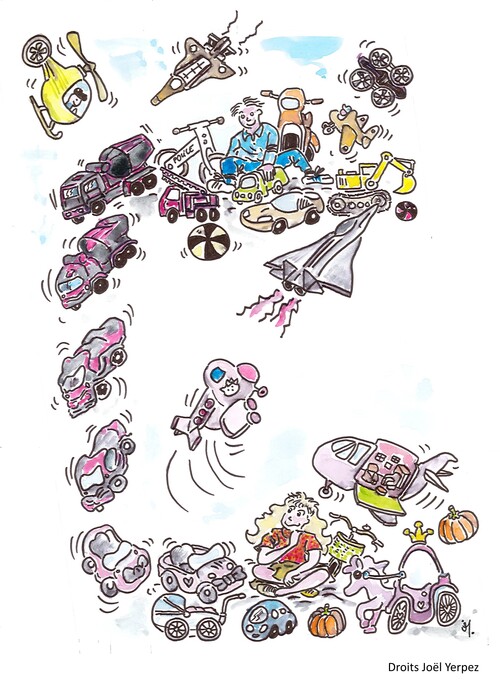Transportation, mobility and security : a matter of gender?
Marie-Axelle Granié, Scientific coordinator of the science topic, Université Gustave Eiffel
The difference between the sexes has long been ignored in the fields of both planning and transport. In the past, transport planners made no distinction between individuals on the grounds of their sex. Nevertheless, decisions were primarily taken by men, based on their interests and experience. This failure accentuated and perpetuated inequalities between men and women with regard to mobility. In this context, social beliefs that disparage women drivers appeared at the same time as the motor car, with the implicit aim of keeping women at home. Are the current challenges that face us in the areas of transport, mobility and safety a matter of gender?
This thematic file presents Gustave Eiffel University’s research on gender in transport, mobility and safety, a topic to which the public authorities are attaching ever greater importance.
This research confirms that men and women do not use the same transport modes, and do not share the same frequencies or purposes of trip-making. Such differentiation appears very early in life and continues throughout it: elderly women stop driving sooner than men.
These differences may be partly due to a higher perception of risk. Women feel greater unease in public spaces and when using public transport. This perception of risk may explain some of their travel choices, such as their low level of interest in motorised two-wheelers. It may also explain their behaviours as drivers, motorcyclists and pedestrians, and their lower pass rate in the practical driving test.
Taking account of women in transport research suggests new ways answering old questions. It requires us to redefine our current areas of concern and give women a role not only as subjects for research but also as active participants in the framing of policies for urban areas and transport.
Sex, gender : what differences?

Why do we talk about differences between the “sexes”?
In scientific studies, the word “sex” is used to define the biological and physiological diffe-rences between men and women. “Men” and “women” correspond to two sexual categories.
What about "gender" then ?
“Gender” refers to the beliefs and stereotypes that relate to each sex. It also refers to the activi-ties, roles and personality traits a society deems to be more appropriate for men or women and which it values as “masculine” or feminine”. The concepts of “masculine” and “feminine” therefore relate to “gender”.
Does the question of “gender” provide us with a new way of seeing things?
“Gender” is a social construct that creates a hierarchy between men and women. While the biological differences between the sexes are relatively stable, the social expectations that are linked to gender vary from one time or place to another. If we wish to investigate gender, we therefore need to consider both men and women and the similarities and differences between them.
Summary
Introduction
Women are shaking up the principles of mobility
Social inequalities and gender in relation to road risk
Women's experience in public transport
Driving-related sex stereotypes
The role of gender in risky behaviour
Female powered two-wheeler driver
Adapting one's driving habitss to accommodate age-related changes
Identity card of the science topic
| Title: | Transportation, mobility and security : a matter of gender? |
| Coordinator: | Marie-Axelle Granié |
| Authors: | Ariane Dupont-Kieffer, Mohamed Mouloud Haddak, Gonçal Cerdà Beneito, Marie-Axelle Granié, Cécile Coquelet, Sylviane Lafont |
| Collection: | Ifsttar sciences topics |
| Version: | PDF for free download in web and print versions |
| Licence: | Creative Common CC BY-SA 4.0 |
| Publication: | February 2018 |
| Languages: | French and english |
| Keywords: | Gender, inequalities, driving, transport, psychology, Ifsttar science topics |

